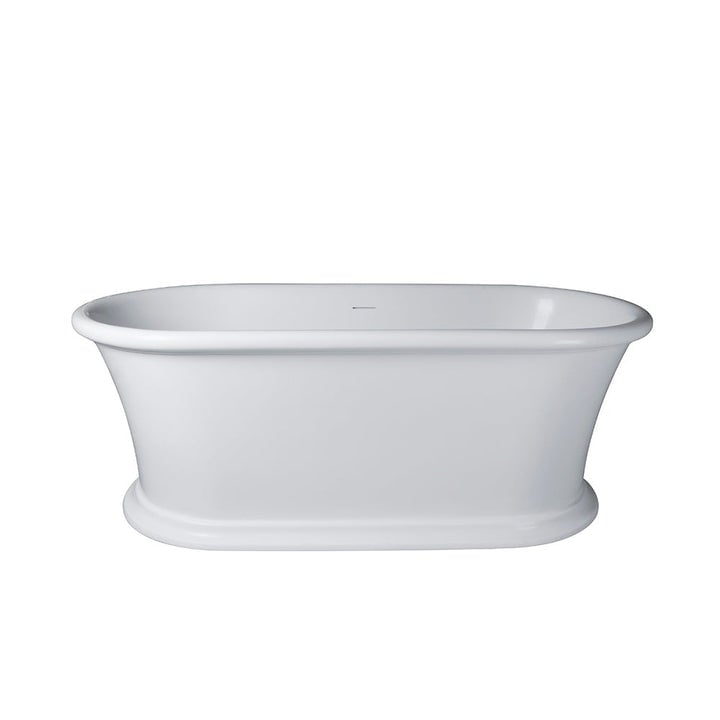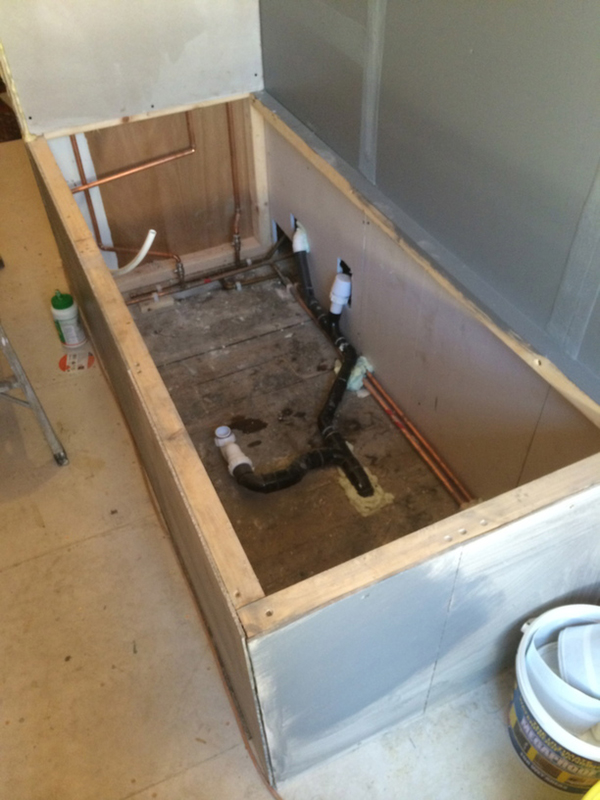Mastering Basic Plumbing for Installing a Bathtub
Mastering Basic Plumbing for Installing a Bathtub
Blog Article
We've found this article pertaining to Installing A Bathtub down the page on the internet and concluded it made good sense to talk about it with you on this site.

Installing a bath tub isn't exactly rocket science, however it does need strong plumbing, carpentry, as well as often, tiling abilities. Changing an old bath tub with a brand-new one is also a moderately challenging task. If the old bathtub is conveniently obtainable, the task can relocate speedily; if you have to open a wall surface to get rid of the old tub and also place the brand-new tub, the task is much harder. In either instance, the task is within a residence handyman's skills, although you will certainly need a helper to vacate the old bathtub and set in the brand-new one. Make certain you have certified on your own for the task and fit trying it. Rather than working with a service provider to take control of a halfway-completed project, it is far better to take into consideration employing one prior to you begin. Opportunities are you may require a professional plumber to make tube links.
This short article will certainly assist you mount a new bath tub in your bathroom if you have actually currently purchased a brand-new bathtub and do not require to alter the setup of your previous water supply pipelines.
Your tools as well as product list should make up the following:
Removing Old Taps
If you need to change old faucets with new ones as a part of your setup, after that the first thing you need to do is separate the water. After doing so, activate the faucets to drain any water remaining in the system. The procedure of getting rid of the existing faucets can be fairly bothersome as a result of the limited gain access to that is commonly the situation.
Utilize a basin wrench (crowsfoot spanner) or a faucet tool to undo the nut that attaches the supply pipelines to the faucets. Have a cloth all set for the staying water that will originate from the pipes. Once the supply pipelines have been gotten rid of, utilize the exact same device to loosen the nut that holds the faucets onto the bath/basin. You will require to stop the solitary taps from transforming throughout this procedure. Once the faucets have actually been eliminated, the holes in the bath/basin will certainly have to be cleaned up of any type of old securing substance.
Prior to proceeding to fit the brand-new faucets, compare the pipe connections on the old taps to the new faucets. If the old taps are longer than the brand-new taps, after that a shank adapter is needed for the new taps to fit.
Fitting New Touches
If the tails of the new faucets are plastic, after that you will require a plastic adapter to stop damages to the string. One end of the adapter fits on the plastic tail of the tap as well as the various other end offers a link to the current supply pipelines.
If you require to fit a monobloc, after that you will certainly call for reducing couplers, which connects the 10mm pipe of the monobloc to the conventional 15mm supply pipe.
Next off, place the faucet in the placing opening in the bath/basin making sure that the washing machines are in place between the faucet as well as the sink. Protect the faucet in position with the producer provided backnut. As soon as the faucet is securely in position, the supply pipelines can be connected to the tails of the faucets. The taps can either be connected by utilizing corrugated copper piping or with regular faucet adapters. The previous type ought to be attached to the faucet ends initially, tightening only by hand. The supply pipelines can later be connected to the various other end. Tighten both ends with a spanner after both ends have actually been linked.
Installing the Tub
Using the two wood boards under its feet, place the bath tub in the required setting. The wood boards are valuable in equally spreading the weight of the tub over the location of the boards instead of focusing all the weight onto four little factors.
The following goal is to ensure that the bathtub is leveled all round. This can be attained by examining the level and readjusting the feet on the bathtub until the level reviews degree.
To install faucets, fit the bottom of the furthest adaptable faucet adapter to the appropriate supply pipe by making a compression join; then do the exact same for the other tap.
Switch on the supply of water as well as check all joints and new pipework for leaks and tighten them if necessary. Fill the bath tub as well as likewise check the overflow electrical outlet and also the typical outlet for leakages.
Lastly, deal with the bath paneling as described in the supplier's user's manual. Tiling and securing around the tub should wait up until the bathtub has actually been used a minimum of when as this will resolve it into its last position.
Planning for the Setup
To start with, the supporting structure supplied with the bath ought to be fitted (if called for) according to the manufacturer's directions. Next off, fit the taps or mixer to the bathtub. When suitable the faucet block, it is essential to make certain that if the faucet includes a plastic washing machine, it is fitted in between the bathroom and the taps. On a plastic bathroom, it is also reasonable to fit a sustaining plate under the taps system to avoid pressure on the bath tub.
Fit the adaptable faucet adapters to the bottom of both faucets making use of 2 nuts and olives (often supplied with the tub). Fit the plug-hole outlet by smearing mastic filler round the sink outlet opening, and afterwards pass the electrical outlet with the hole in the bath. Use the nut supplied by the maker to fit the plug-hole. Take a look at the plug-hole outlet for an inlet on the side for the overflow pipeline.
Next, fit completion of the flexible overflow pipeline to the overflow electrical outlet. After that, screw the pipeline to the overflow face which must be fitted inside the bath. See to it you utilize all of the provided washers.
Attach the trap to the bottom of the waste electrical outlet on the bathtub by winding the string of the waste outlet with silicone mastic or PTFE tape, and also screw on the trap to the electrical outlet. Connect all-time low of the overflow tube in a similar manner.The bathroom should currently prepare to be fitted in its last placement.
Tiling Around the Bathtub
In the location where the bathroom meets the tile, it is required to secure the accompanies a silicone rubber caulking. This is essential as the installation can relocate sufficient to break a stiff seal, triggering the water to pass through the wall between the bathroom and also the tiling, leading to problems with moisture as well as possible leaks to the ceiling below.
You can select from a range of coloured sealants to assimilate your fixtures and also fittings. They are marketed in tubes and also cartridges, and are capable of sealing spaces as much as a size of 3mm (1/8 inch). If you have a bigger gap to load, you can fill it with twists of soaked paper or soft rope. Bear in mind to constantly load the bathtub with water before sealing, to enable the motion experienced when the tub is in use. The sealant can break relatively early if you do not take into consideration this activity prior to securing.
Additionally, ceramic coving or quadrant ceramic tiles can be made use of to border the bathroom or shower tray. Plastic strips of coving, which are easy to use as well as cut to dimension, are additionally quickly offered on the market. It is advisable to fit the floor tiles using waterproof or water-proof sticky and cement.
Bathtub Installation
How Important Is A Bathtub To Your Home?
High-quality baths, showers, and other bathroom updates are necessary when considering a smart investment in your home. It’s a room that you go to every day and one that is constantly being used by guests.The bathroom is one of the top trafficked rooms in a home and also one of the most valuable in terms of home resale.
Install Piping Before Tub
You will be using your existing drain and waste vent system, but pipes required include the hot and cold water supply lines and a pipe leading to a shower head. A mixing valve and shower head are also needed. Air chambers may be required.
Position the Tub
Lower the tub into place so that the continuous flange fits against the wall studs and rests on 1’x4' or 2’x4' supports. Anchor the tub to the enclosure with nails or screws inserted through the flanges into the studs.
NOTE: Remember, bathtubs and shower stalls may require support framing. A bathtub filled with water is extremely heavy, so check building codes and framing support before installing the tub.
Assemble Drain Connections
Assemble the bathtub drain connections by connecting the tub overflow with the tub drain above the trap, not beyond it. The trap will have a compression fitting that screws over the arm of the overflow assembly.
Place a Pipe For the Shower Head
First, locate a brass female threaded winged fitting and attach it to a framing support via a screw or a nail. Then run a pipe up the wall for the shower head. Sweat or solder the other side of the brass fitting to the top of the pipe.
Attaching Hot and Cold Water Lines
Attach your water lines for both hot and cold by sweating these directly into the hot and cold ports of the mixing valve. The mixing valve will be how water enters the tub’s system, not by the pipes themselves.
Install the Spout
Extend a piece of 1/2 inch pipe, or whichever length is specified in the manufacturer’s instructions, for the tub spout. Sweat on a male threaded fitting at the end of the pipe or use a brass nipple of the proper length and a 1/2 inch cap.
NOTE: At this point you should have your rough-in plumbing work inspected before proceeding further.
Check For Leaks
Restore the water pressure and check the drain connection and the supply pipes for any sign of leaking.
estore the Bathroom Wall
Replace the wall with moisture-resistant drywall as a base for your wall covering. Seal the joints between the wall and your new tub with silicone caulk as protection against water seepage.
https://www.berkeys.com/2016/12/02/bathtub-installation-dallas/

I have been very drawn to How to Install a Bathtub: Install an Acrylic Tub and Tub Surround and I really hope you appreciated my blog post. Sharing is caring. You won't know, you could be doing someone a favor. We treasure reading our article about How to Install a Bathtub.
Article Report this page